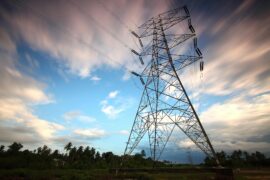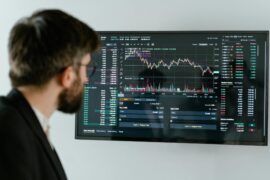This article may contain references to products or services from one or more of our advertisers or partners. We may receive compensation when you click on links to those products or services. Nonetheless, our opinions are our own.
Key Highlights
- Cyclical unemployment occurs when the economy slows down and improves when economic conditions recover.
- Key economic indicators, such as GDP decline and rising unemployment rates, help identify cyclical unemployment.
- Addressing cyclical unemployment often requires government intervention through fiscal and monetary policies.
- Businesses can adapt by adjusting staffing strategies and exploring alternative markets.
- Understanding cyclical unemployment helps both employers and employees navigate economic fluctuations effectively.
Introduction
Cyclical unemployment is directly linked to fluctuations in the economy. It occurs due to the natural expansion and contraction of economic growth. During economic downturns, consumer spending decreases, leading businesses to cut jobs, which results in higher unemployment rates.
Understanding Cyclical Unemployment
Cyclical unemployment is caused by economic downturns that reduce consumer demand. When businesses experience declining revenue, they often lay off workers to reduce costs. Fortunately, this type of unemployment is temporary, as job opportunities typically return when the economy recovers.
This form of unemployment affects various industries and income levels. To better understand it, recognizing key economic indicators and labor market trends is essential.
Defining Cyclical Unemployment in the Context of Economic Cycles
Cyclical unemployment differs from other forms, such as frictional or structural unemployment, as it is directly tied to economic performance. When the economy expands, production increases, businesses invest more, and employment rates rise. Conversely, during recessions, economic activity slows, resulting in job losses and increased unemployment.
Recognizing that cyclical unemployment is temporary is crucial. Economic downturns create challenges, but they are often followed by periods of recovery, where businesses regain confidence, demand rises, and employment levels stabilize.
The Role of Economic Downturns in Triggering Cyclical Unemployment
Economic downturns frequently occur as part of the business cycle and significantly impact the labor force. During these periods, consumer confidence weakens, leading to reduced spending. This decline in demand forces businesses to scale back production and reduce their workforce.
As more people lose jobs, their purchasing power diminishes, further reducing demand and deepening the economic slowdown. This cycle can be difficult to break without government intervention and strategic economic policies. Prolonged downturns make recovery harder, emphasizing the need for timely action to minimize unemployment levels.
A Beginner’s Guide to Identifying Cyclical Unemployment
Identifying cyclical unemployment requires analyzing both individual job losses and broader economic trends. On a personal level, being laid off due to company downsizing or experiencing limited job opportunities in specific industries are signs of cyclical unemployment.
On a macroeconomic level, key indicators such as declining GDP, rising unemployment rates, and reduced industrial production signal economic contraction. These trends highlight an increase in cyclical unemployment.
Indicators of Cyclical Unemployment in the Economy
Cyclical unemployment is closely linked to economic conditions, and several key indicators help in recognizing its presence. The Bureau of Labor Statistics (BLS) provides valuable data to track these trends.
- Rising Unemployment Rate: A rapid and sustained increase in unemployment suggests an economic downturn.
- Decline in GDP Growth: A contracting economy results in decreased business activity and job losses.
- Reduced Industrial Production: Lower output levels indicate weakened demand and potential job cuts.
- Falling Consumer Confidence: When consumers anticipate economic instability, they reduce spending, leading to further declines in business revenues and employment.
Tracking these indicators helps anticipate cyclical unemployment and develop appropriate responses.
Analyzing Unemployment Data: What You Need to Know
Understanding unemployment data requires more than observing the overall rate. Factors such as long-term unemployment trends and sector-specific job losses provide deeper insights.
Industries reliant on consumer spending, such as retail, hospitality, and manufacturing, are more vulnerable to cyclical unemployment. Analyzing which sectors are affected the most enables policymakers to design targeted support programs.
Additionally, fiscal and monetary policies—such as interest rate adjustments, economic stimulus measures, and infrastructure investments—play a critical role in mitigating cyclical unemployment. Monitoring these actions helps gauge their effectiveness in stabilizing employment levels.
Step-by-Step Guide to Addressing Cyclical Unemployment
Addressing cyclical unemployment requires both immediate interventions and long-term economic strategies. Governments, businesses, and individuals all play roles in mitigating its effects.
Step 1: Assessing the Scale of Cyclical Unemployment
The first step is distinguishing cyclical unemployment from other types, such as frictional unemployment, which results from voluntary job transitions. Analyzing key economic indicators, including unemployment rates, GDP changes, and sector-specific data, helps assess the severity of the problem.
Policymakers must determine whether the economic downturn is temporary or linked to broader structural issues. Understanding these factors is essential for developing effective solutions.
Step 2: Identifying Key Sectors Affected by Cyclical Unemployment
Cyclical unemployment disproportionately affects certain industries. For instance:
- Manufacturing: A drop in consumer demand leads to reduced production and job losses.
- Construction: Economic slowdowns decrease spending on new developments, affecting employment in the sector.
- Retail and Hospitality: Lower consumer spending results in fewer job opportunities in customer-facing industries.
Recognizing which sectors suffer the most allows for targeted assistance, such as retraining programs and financial incentives to support struggling businesses.
Step 3: Implementing Measures to Stimulate Economic Growth
Reviving economic activity is key to reducing cyclical unemployment. Governments and central banks implement various policies to encourage growth:
- Monetary Policy: Lowering interest rates makes borrowing cheaper, encouraging businesses to invest and expand their workforce.
- Fiscal Policy: Increased government spending on infrastructure and public services creates jobs and stimulates demand.
- Tax Incentives: Reducing taxes for businesses can encourage hiring and investment in new projects.
By combining these approaches, economies can recover more quickly from downturns and restore employment levels.
Step 4: Supporting Job Creation Initiatives
Encouraging job creation helps counter cyclical unemployment by providing new opportunities for displaced workers. Strategies include:
- Employment Incentives: Governments offer tax breaks and subsidies to companies that hire from vulnerable populations.
- Public Works Projects: Investments in infrastructure create jobs in construction and related industries.
- Workforce Training Programs: Equipping workers with new skills prepares them for emerging job markets, ensuring long-term employment stability.
Focusing on job creation ensures a more resilient labor market capable of withstanding future economic fluctuations.
Conclusion
Understanding cyclical unemployment is essential for maintaining economic stability. By identifying its causes, assessing affected sectors, stimulating growth, and fostering job creation, policymakers and businesses can effectively minimize its impact.
Monitoring economic indicators and implementing timely interventions are crucial for managing cyclical unemployment. By staying informed and proactive, individuals and businesses can navigate economic downturns more effectively.
Frequently Asked Questions
What Causes Cyclical Unemployment?
Cyclical unemployment occurs due to fluctuations in the business cycle. During economic downturns, reduced consumer spending forces businesses to cut jobs, increasing unemployment rates.
How Does Cyclical Unemployment Differ from Structural Unemployment?
Cyclical unemployment is temporary and linked to economic conditions, while structural unemployment results from long-term shifts in the job market, often due to technological advancements requiring new skill sets.
Can Cyclical Unemployment Be Predicted and Mitigated?
While predicting cyclical unemployment with complete accuracy is challenging, monitoring economic trends and implementing proactive fiscal and monetary policies can help reduce its impact.

Reviewed and edited by Albert Fang.
See a typo or want to suggest an edit/revision to the content? Use the contact us form to provide feedback.
At FangWallet, we value editorial integrity and open collaboration in curating quality content for readers to enjoy. Much appreciated for the assist.
Did you like our article and find it insightful? We encourage sharing the article link with family and friends to benefit as well - better yet, sharing on social media. Thank you for the support! 🍉
Article Title: How to Identify and Address Cyclical Unemployment
https://fangwallet.com/2025/02/15/how-to-identify-and-address-cyclical-unemployment/The FangWallet Promise
FangWallet is an editorially independent resource - founded on breaking down challenging financial concepts for anyone to understand since 2014. While we adhere to editorial integrity, note that this post may contain references to products from our partners.
The FangWallet promise is always to have your best interest in mind and be transparent and honest about the financial picture.
Become an Insider

Subscribe to get a free daily budget planner printable to help get your money on track!
Make passive money the right way. No spam.
Editorial Disclaimer: The editorial content on this page is not provided by any of the companies mentioned. The opinions expressed here are the author's alone.
The content of this website is for informational purposes only and does not represent investment advice, or an offer or solicitation to buy or sell any security, investment, or product. Investors are encouraged to do their own due diligence, and, if necessary, consult professional advising before making any investment decisions. Investing involves a high degree of risk, and financial losses may occur including the potential loss of principal.
Source Citation References:
+ Inspo











































